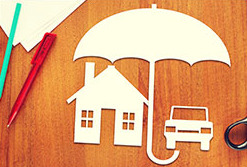 If you are considering becoming a rideshare driver, this provides great insight into when and why you have no coverage.
If you are considering becoming a rideshare driver, this provides great insight into when and why you have no coverage.
There is a void between the time one’s personal auto insurance policy stops providing any coverage and the time the commercial auto policy starts. If there is ever an incident that occurs during this gap, drivers could find themselves left to pay for all damages on their own.
This gap exists because of the rapid rise of Transportation Network Companies (TNCs) like UberX, Lyft, and Sidecar. They have gained in popularity and spread throughout the US so quickly, that the insurance industry and lawmakers have not had the time they require to methodically update the policy language or laws. Revisions are required to better manage the new risk.
There are three distinguishable risk periods in the TNC business model. Period I is when the driver turns the mobile application on, logs in, and is waiting to be matched with a passenger. Period II is when a passenger has requested the driver’s services and the driver agrees – a match is made. Period III is when the passenger is in the vehicle with the driver, and they are en route to the desired location. So, when exactly does the driver of the private passenger vehicle become a transporter?
Personal insurance carriers argue that the instant the app is turned on, the driver is now working for the TNC – coverage ends at the start of Period I. The TNCs argue that the driver does not begin working until a match is made – coverage begins at the start of Period II. And therein lays the gap. Neither the personal insurance carriers nor the TNCs want to offer any coverage during Period I.
The traditional idea of carpooling and sharing the gas expense with a friend on a road trip does not present any problems to a personal auto policy. However, there is a dilemma when the driver is no longer sharing expenses but making a profit by delivering passengers or goods. This is because almost all personal auto policies have a specific exclusion for the transportation of goods or passengers (Livery Exclusion). Personal insurance providers have this exclusion because there are increased risks and claims that are associated with livery exposures, such as distracted driving, commuting in congested traffic, and additional mileage.
This exclusion, by definition, means that the very second the UberX or Lyft driver turns on the mobile app to find a passenger, the coverage from the personal insurance policy disappears. To make it even clearer, many insurance carriers are revising their policy language to specifically exclude coverage during all periods while the driver is working for a TNC.
The TNCs, on the other hand, view their drivers more like contractors than employees and do not believe that the driver has become a transporter in Period I. Their interpretation is that the driver is only hired to complete a job when a match is accepted. If there is no match, then there is no contract, and, if there is no contract, then the full insurance coverage is not in place.
In addition, TNCs are concerned with drivers unintentionally and intentionally turning on the app and not accepting any matches. They do not want their commercial coverage to become a substitute for personal insurance. It is on the other side of the coin, but again, there are increased risks and claims that the commercial insurance providers do not want to be held accountable for.
Still, some TNCs may provide lower limits of liability coverage only (bodily injury and property damage done to others) during Period I. However, these limits could easily be inadequate for serious accidents, and there would be no physical coverage for the vehicle.
So, for now, if you are considering becoming a rideshare driver, you will want to 1.) verify adequate coverage with the TNC, and 2.) be extremely cautious during Period I. Otherwise, if there is a claim, you could find yourself all alone. If you have additional questions, contact a knowledge broker at R&R insurance!
 Real-World Case Study: The Risk of Teen Driving
Real-World Case Study: The Risk of Teen Driving









